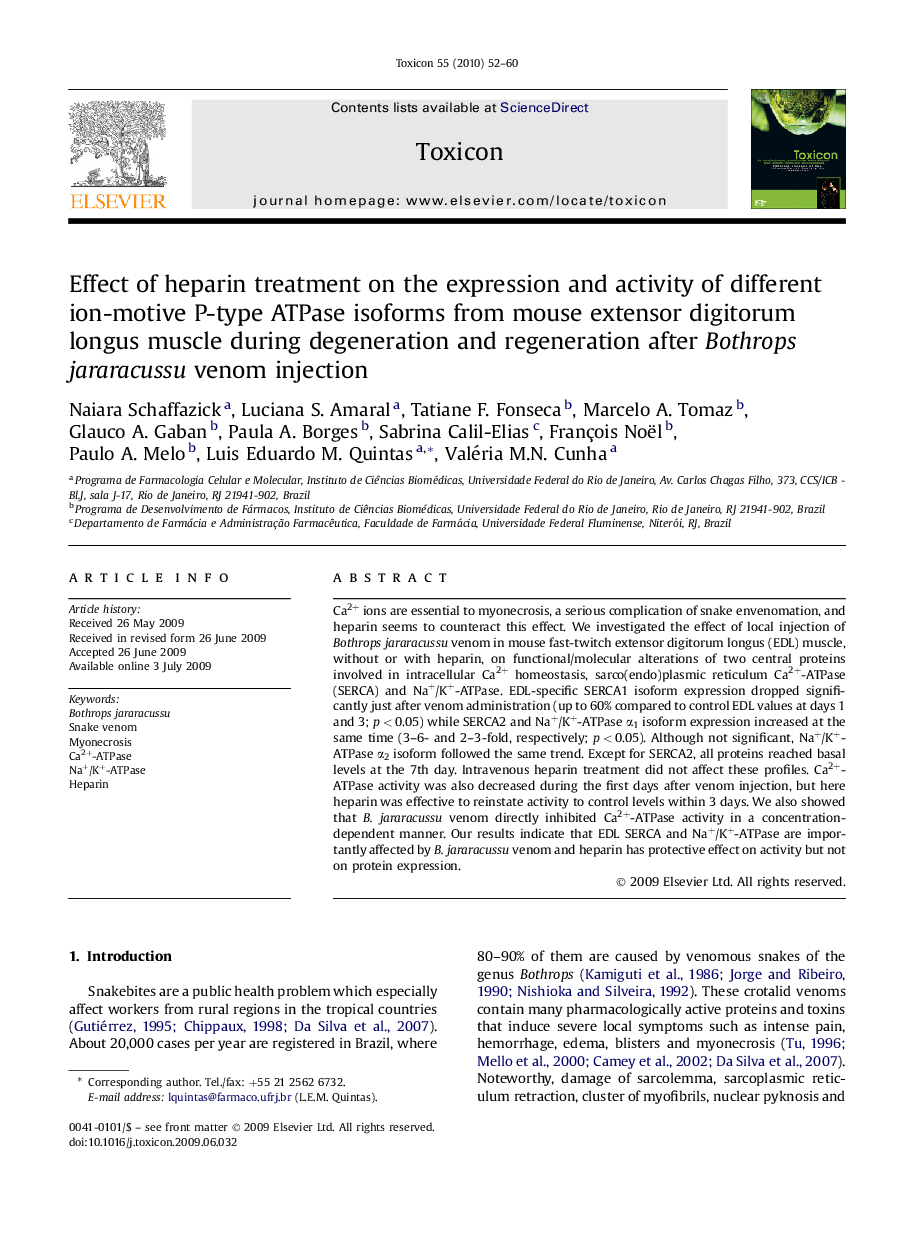| Article ID | Journal | Published Year | Pages | File Type |
|---|---|---|---|---|
| 2065446 | Toxicon | 2010 | 9 Pages |
Ca2+ ions are essential to myonecrosis, a serious complication of snake envenomation, and heparin seems to counteract this effect. We investigated the effect of local injection of Bothrops jararacussu venom in mouse fast-twitch extensor digitorum longus (EDL) muscle, without or with heparin, on functional/molecular alterations of two central proteins involved in intracellular Ca2+ homeostasis, sarco(endo)plasmic reticulum Ca2+-ATPase (SERCA) and Na+/K+-ATPase. EDL-specific SERCA1 isoform expression dropped significantly just after venom administration (up to 60% compared to control EDL values at days 1 and 3; p < 0.05) while SERCA2 and Na+/K+-ATPase α1 isoform expression increased at the same time (3–6- and 2–3-fold, respectively; p < 0.05). Although not significant, Na+/K+-ATPase α2 isoform followed the same trend. Except for SERCA2, all proteins reached basal levels at the 7th day. Intravenous heparin treatment did not affect these profiles. Ca2+-ATPase activity was also decreased during the first days after venom injection, but here heparin was effective to reinstate activity to control levels within 3 days. We also showed that B. jararacussu venom directly inhibited Ca2+-ATPase activity in a concentration-dependent manner. Our results indicate that EDL SERCA and Na+/K+-ATPase are importantly affected by B. jararacussu venom and heparin has protective effect on activity but not on protein expression.
